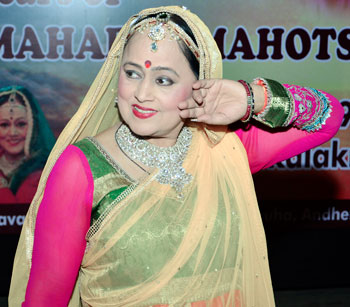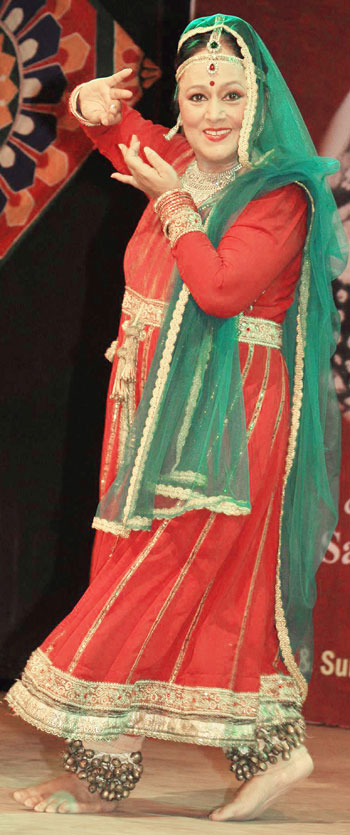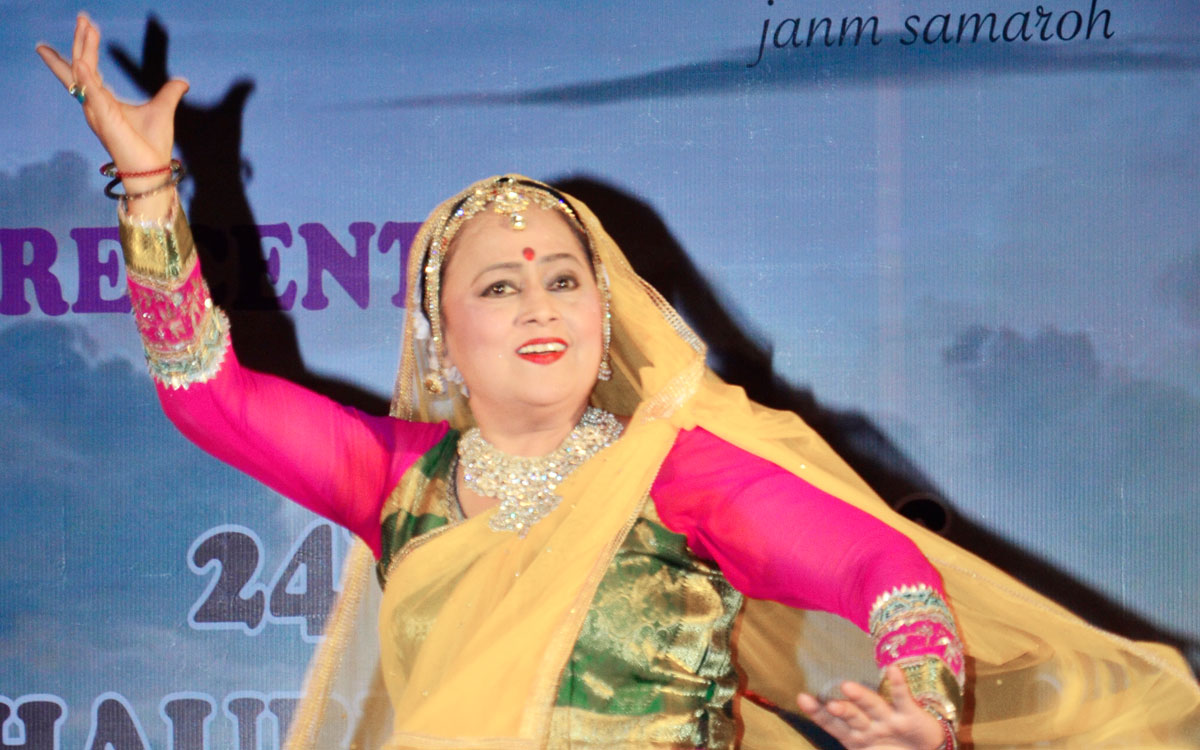Jayantimala : “Life is a dance for me”
The renowned Kathak exponent Jayantimala has been performing internationally for more than five decades. Daughter of the legendary Kathak queen Sitara Devi, Jayanti has also taught kathak to showbiz personalities like Kangana Ranaut, Tanushree Datta, Neetu Chandra, Mugdha Godse, Hrishita Bhatt, Shilpa Shinde etc. Jayantimala is also the founder of Kala Kriti Kendra and imparts training to poor students as well. In an exclusive interview with VIJAY SHANKER, for CINEBUSTER, Jayantimala reveals her varied experiences as a performer and teacher and talks about her daughter Rishika Mishra and Hiroko Sarah Fukuda from Japan.
 How were you initiated into dancing?
How were you initiated into dancing?
Dance has come naturally to me. I started at a tender age of hardly three years old with Tara Devi (mother of Gopi Krishna), my mother Sitaraji, Chaube Maharaj and Ustad Allah Rakha. I belong to the tenth generation of dancers and musicians of the Benaras Gharana, hence music and dance is my life and my existence
When did you decide to become a professional dancer?
Since I danced quite a lot at a tender age, I never thought of dancing at a professional level. There were days when I used to be paid even 500 rupees per performance and in a day I used to perform at least thrice.
How was your experience with your mentors?
Learning from my mother Sitara Deviji was a different experience. Learning from her was not easy, as she would give strict instructions that if I didn’t learn properly, I would not get lunch or dinner, or even play. I would steal food and eat it secretly in the bathroom or under the cot. I learnt discipline from her which is very essential in classical dance, as it takes several years to master classical dance. My experience with Chaubeji was different, as he was quite systematic and peaceful in his teaching style, and would stress on the basic steps to be learnt.
How would you describe Kathak queen Sitara Devi?
Sitara Devi was a born dancer. While she was a teenager, Nobel laureate Rabindranath Tagore declared her as the Kathak queen as he was mesmerised by her vivacious quality and power as a dancer. She was completely devoted and danced exclusively in India and abroad, she danced with rare grace “nazakhat” and vibrancy. Sitaraji was a rare beauty, who acted in Mehboob Khan’s films like Aurat, Roti etc. In Vansantasena she played the heroine and the dancer too. She became famous at a young age and would advice us that dancers should eat well and practice consistently in order to give a good performance In her hey days dancers were completely devoted, unlike today when students are involved in too many things, and hence do not have much time for a dance.
Is it true that Sitaraji had refused the Padma Vibhushan?
Yes. She refused the Padma Vibhushan. As she rightly felt that she deserved the Bharat Ratna for her unusual and outstanding contribution as the dancer.
 Tell us about Ranjit Barot!
Tell us about Ranjit Barot!
Ranjit Barot is the son of Sitara Devi and a professional musician and music composer and a brilliant percussion instrumentalist with several performances both in India and abroad.
What is your view about Bollywood dancing?
At the start of Hindi films, the dances had roots in classical dances, folk dances and sometimes Ball room dance too, but over the years the dance has changed with the mixture of different styles with a cinematic appeal to attract the masses and not the classes.
Tell us about your sister Priyamala?
I and Priya were great sensations as duo dancers. We look alike and dance with a lot of involvement and vibrancy and hence were hailed by the media as well.
What has been your family reaction?
Since I belonged to a family of music and dance practitioners, I always received constant encouragement and support which is necessary for the growth of an artiste.
 What has been your most memorable performance till date?
What has been your most memorable performance till date?
It was a lifetime experience performing for the Badri Kedarnath festival where the chief guest was Field Marshal Maneckshaw. While I was performing the scene of Ganga Avartanam, there was a sudden burst of ice and water came crashing down on me and I was shocked but continued to dance and after the performance, it started raining and I became numb, the officials gave me rum to drink to beat the cold.
Tell me about your performances abroad!
The European audiences have always been quite appreciative, especially in countries like UK, France, US.The Middle East etc. The best part is that the audiences in all age groups attend the program unlike in India where normally youngsters do not at all attend the program.
What has been your experience as a choreographer?
I have done choreography and also acted in films like Amrapali, Pyar Deewana Hota Hai, Badhai Ho Badhai, as well as serials like Maa that show power of women both as a mother and a goddess. I have played the roles of Parvati and Sati. In Sushama Vallari, I played the role of the heroines (Nayika-Bhed) in all the 108 episodes.
Tell us about your daughter Rishika!
Rishika has learnt kathak and is a wonderful performer and has performed for several festivals in India and aboard. Rishika is a fine replica of the Sitara devi style of presentation, technique and her youthful spirit. Rishika ,who performed for ICCR in Sweden and London, was thrilled to perform and conduct workshop and interact with other dancers with hip hop etc. Rishika likes to innovate and experiment with other styles and form her own dance statement. She was acclaimed as Venus beauty.
What is your advice for youngsters today?
Youngsters should be devoted, hardworking and serious about their career.


